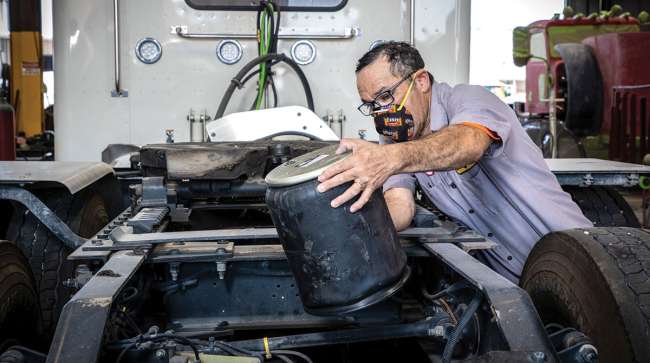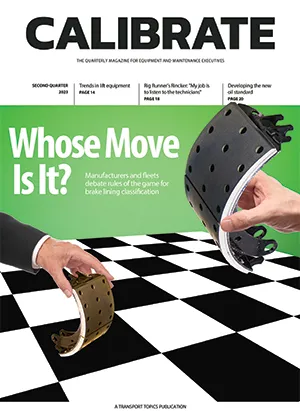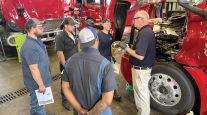Features Editor
Input Needed on Brake Lining Classification

[Find the latest in equipment & maintenance: Explore this quarter's issue of Calibrate]
As the great American author Mark Twain said, “History doesn’t repeat itself, but it often rhymes.” In a past life, I covered the automotive aftermarket industry at a time when a contentious issue, dubbed “the Right to Repair,” was debated in the passenger vehicle space between auto technicians and distributors, and OEM and aftermarket suppliers. It all boiled down to access to service information.
Depending on whom you asked during the 2000s, the Right to Repair was fighting what technicians and parts distributors viewed as a roadblock to their jobs. Then, OEMs provided them service information concerning vehicle repair and maintenance, although at a lofty subscription fee that some smaller shops could not afford. The Fords and Chevys of the world were accused of deliberately limiting information due to fear of losing proprietary information that could be reverse engineered by their competitors.
Sound familiar?
Plus, with the emergence of vehicle manufacturers developing onboard diagnostic computers to monitor vehicle emission-related components, it was only a matter of time before computers eventually began to monitor and control other nonemission-related components such as brakes, lights and air bags. Thus creating a battle that caused a coalition of technician and distributor associations to lobby Congress to step in.

Freeze
The debate was often scattered. Some technician shops had no problem working with OEM service providers while others felt they weren’t on a level playing field. However, the one thing in common for both sides was that they felt it was important to have their voices heard.
In a situation that’s not nearly as combative but nonetheless rhyming, brake lining classification centers on the work of crafting a recommended practice through vehicle and dynamometer testing data. In this case, there are brake manufacturers that want to assist in creating a recommended practice. However, there are others that are not willing to be part of that process. The schism leads fleet managers to choose a brake product on data that may not be an apples-to-apples comparison to other standard practices.
More Q2 Calibrate
►Standard Sought for Brake Lining Classification
►Freeze: Participating in the Right to Repair Debate
►Fleets Weigh Lift Equipment
►5 Questions With Rig Runner's Jay Rincker
►Baxter: New Oil Standard Will Help Fleets
►TMC Corner: The Evolution of Tractor-Trailer Connectivity
Explore the Issue!
However, during the task force on the subject at the Technology & Maintenance Council Annual Meeting in Orlando in February, when asked, most fleet managers in attendance were mum on any type of feedback. In addition, not too many were aware of the current recommended practice in place.
As Robert Braswell, TMC executive director, noted about this subject, there are many reasons for suppliers to share or not share data about their products. Also, fleet managers want to make the right decision when purchasing parts that will be used strenuously on the road for thousands of miles at a time. The resolution is somewhere in the middle.
These both are good-faith arguments to have, and similar to the Right to Repair debate nearly 20 years ago, participation is required. Whatever solutions may arise from the examination of this RP — and as the suppliers requested during its task force — it’s important to have the fleet guys at the table.
Having that conversation, as a group or one-on-one, can go a long way in finding out what those top considerations are and just as importantly, what’s the actual problem to solve in all of this. Fortunately, this is a discussion that poses a win-win for everybody in the game, but first, you have to be in it to win it.
Want more news? Listen to today's daily briefing below or go here for more info:





